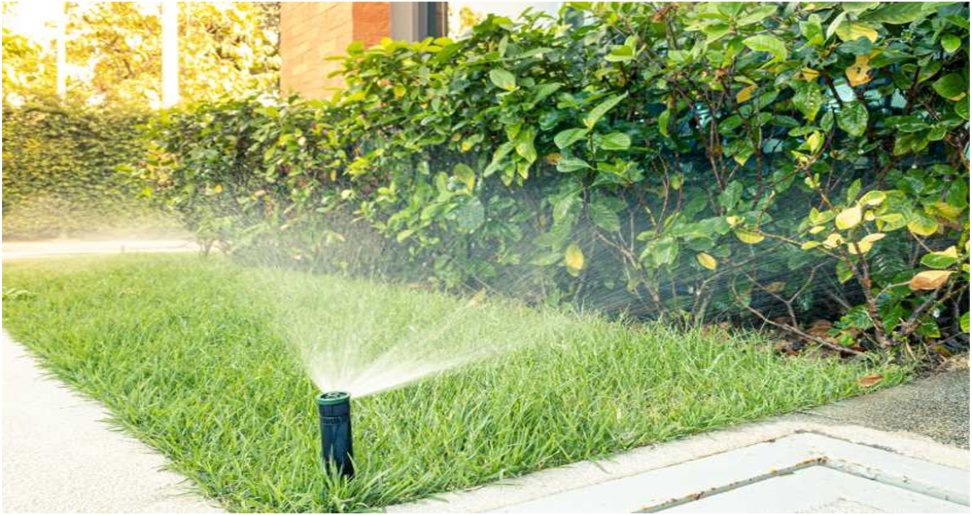Enhancing the exterior of a property is crucial for creating a welcoming and attractive environment. Maximizing curb appeal not only boosts the aesthetic value of a home but also contributes to its market value. Landscaping plays a pivotal role in achieving these objectives. This article explores essential considerations for landscaping improvement, focusing on strategic enhancements that can elevate curb appeal.
Key Elements of Landscaping Improvement
Effective landscaping involves a combination of various elements including plant selection, layout design, and maintenance practices. By focusing on these aspects, homeowners can significantly enhance their property’s curb appeal.
Sprinkler Repair: Ensuring Optimal Irrigation
An efficient irrigation system is fundamental to maintaining a lush and vibrant landscape. A well-functioning sprinkler system ensures that plants receive adequate water, contributing to their health and appearance. However, issues with sprinklers can lead to uneven watering, wasted water, and poor plant growth.
Regular Maintenance and Inspection
Routine inspection and maintenance of the sprinkler system are essential. Homeowners should check for common problems such as clogged nozzles, broken sprinkler heads, and leaks in the system. Addressing these issues promptly helps maintain even water distribution and prevents damage to the landscape.
Professional Sprinkler Repair Services
Engaging professional sprinkler repair services can provide a thorough assessment and effective solutions for complex issues. Experts can recalibrate sprinkler systems, replace damaged components, and optimize water usage, ensuring that the landscape remains healthy and attractive.
Upgrading to Smart Irrigation Systems
Consider upgrading to smart irrigation systems that use weather data and soil moisture sensors to adjust watering schedules. These systems not only enhance water efficiency but also reduce water bills, contributing to a more sustainable landscaping approach.
Rainwater Tanks: Sustainable Water Management
Incorporating rainwater tanks into your landscaping strategy is an effective way to enhance sustainability and curb appeal. Rainwater harvesting reduces reliance on municipal water sources and provides a cost-effective means of irrigation.
Benefits of Rainwater Tanks
Rainwater tanks capture and store runoff from roofs and other surfaces, which can then be used for irrigation. This practice conserves water and reduces stormwater runoff, which can lead to erosion and pollution. Additionally, using collected rainwater can lead to healthier plants due to its lower mineral content compared to tap water.
Installation and Maintenance
Proper installation of rainwater tanks involves selecting an appropriate size and location. The system should be designed to integrate seamlessly with existing landscaping and irrigation systems. Regular maintenance is crucial to ensure that the tank remains clean and free from algae or contaminants. This includes periodic cleaning of the tank and checking for any issues with the filtration system.
Integrating Rainwater Tanks with Irrigation Systems
For optimal results, rainwater tanks should be integrated with the irrigation system. This allows for efficient use of stored rainwater and minimizes waste. A professional can help design and install a system that ensures water is delivered effectively to all parts of the landscape.
Additional Considerations for Enhancing Curb Appeal
Beyond sprinkler repair and rainwater management, several other factors contribute to maximizing curb appeal through landscaping:
Plant Selection and Placement
Choosing the right plants for your climate and soil conditions is crucial. Opt for low-maintenance, drought-tolerant species that provide year-round interest. Proper placement of plants, including creating focal points and maintaining symmetry, can enhance the visual appeal of your landscape.
Hardscaping Elements
Incorporate hardscaping features such as pathways, retaining walls, and decorative stone elements to add structure and visual interest. These elements complement the softer aspects of landscaping and provide functional benefits.
Lighting and Mulching
Outdoor lighting can highlight key features of your landscape and create a welcoming atmosphere during the evening. Mulching helps retain soil moisture, suppress weeds, and provide a finished look to garden beds.
Regular Maintenance
Consistent maintenance practices, including mowing, pruning, and weeding, are essential to keep the landscape looking its best. Regular upkeep prevents overgrowth and ensures that the landscape remains neat and attractive.
Conclusion
Maximizing curb appeal through landscaping improvement involves a thoughtful approach to design, maintenance, and sustainable practices. By focusing on elements such as sprinkler repair and rainwater tanks, homeowners can enhance the health and beauty of their landscapes while contributing to environmental sustainability. Implementing these strategies not only improves the overall appearance of a property but also adds value and creates a lasting impression.
Additional:
- Coachella Calling: Festival Fashion Inspiration for 2024
- Look At These Gorgeous Plus-Size Blue Wedding Dresses!
- Check Out These Famous Baby Shower Dresses For Women In 2024

